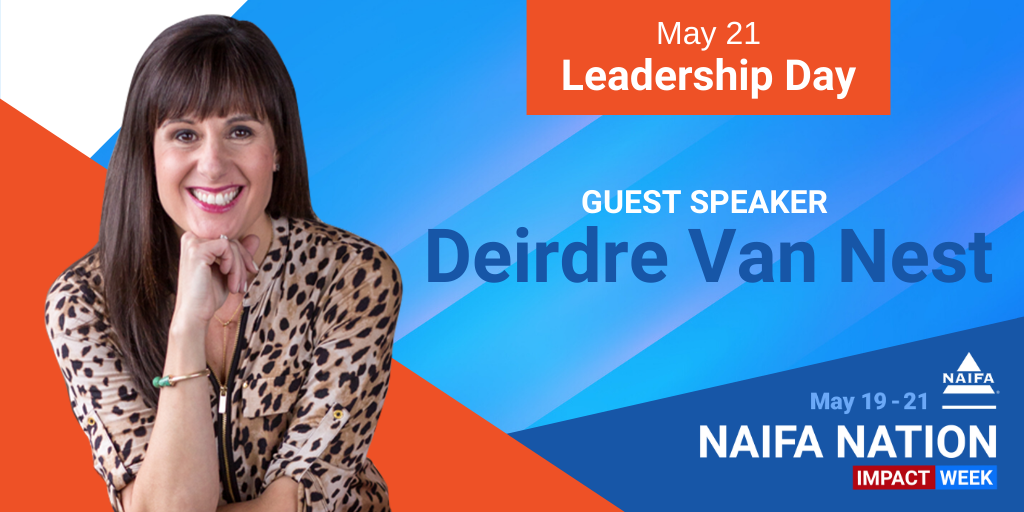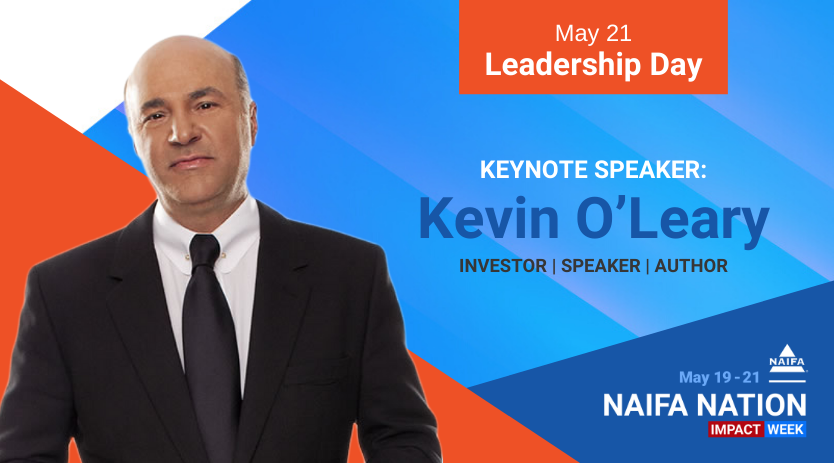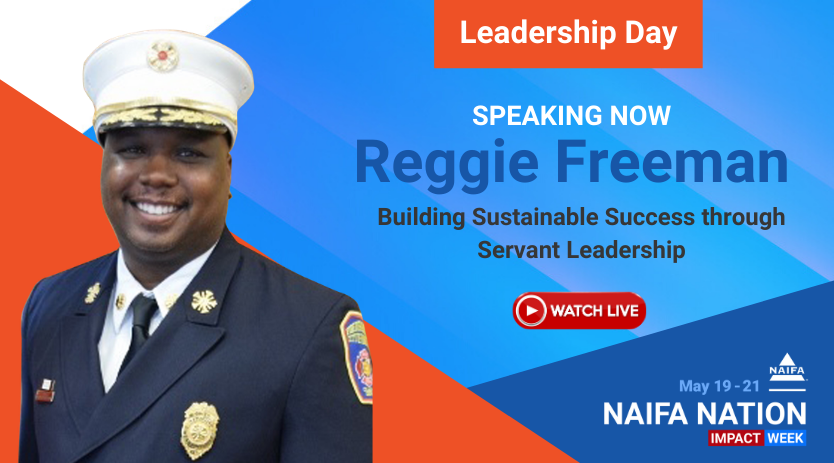Dierdra Van Nest is a communications expert who specializes in helping financial professionals boost their business and better serve consumers by making emotional connections with clients. She shared some of her insights with NAIFA Nation Impact Week’s Leadership Day participants.
Even if you are a great numbers person, Van Nest said, “you don’t want to known as a numbers person. People need to see you on a more personal level, not just as someone trying to win their business.”
The COVID-19 outbreak has spotlighted the value of human connections. During a crisis and in normal times, clients are looking for reassurance and leadership. With all the economic uncertainty and change facing consumers, financial professionals are the “unsung heroes of this crisis,” Van Nest said.
The Power of Being Yourself
We are all more emotionally engaging and have greater impacts on people when we reveal who we really are to others, including clients and prospects.
“Here’s a magic bullet in your marketing plan,” Van Nest said. “Stop trying to prove yourself and start being yourself.”
Storytelling for Business Success
It’s very frustrating to have a great plan and great strategies but not be able to communicate them effectively to clients and prospects. The key to breaking through is making emotional connections. Rather than providing people information, speak to them about benefits: the ways you can benefit them, the ways they can benefit themselves, and the ways they can benefit others.
People make decisions based on their emotions. They may later back up those decisions with logic, but without making an emotional connection it is very difficult to get someone to decided to take action.
“If you want a ‘yes,’ you have to appeal to the emotional side of their brain,” Van Nest said. “Emotional connections can inspire all of those people who would prefer to put off financial decision to ‘someday’ to make decisions to protect their families today.”
Many advisors look the same and offer similar products. Your differentiator is how you communicate. Consumers judge you not on what you know, but on how you talk about what you know.
Three Business Story Types
There are three basic types of stories that are useful in a business setting, Van Ness said. There are:
- The Why Story: Why you do what you do and why you care about the person you’re talking to
- The Desire Story: Stories about success that make the listener desire the same type of success (or, alternatively, stories about the lack of success that listeners desire to avoid)
- Stories or analogies that make a point
All three story types are important to have in your toolbox, Van Nest said, and to weave into communications. But one stands above the others in terms of creating emotional impacts.
The Why Story
The Why Story should be the cornerstone of your marketing plan and foundational to your business. This applies, Van Nest says, equally whether you’re telling the story in person or online. Your why story carries an emotional impact an engages the listener no matter what the economy is like and whether of not you are face-to-face.
The Why Story “is like throwing lighter fluid on all your presentations, conversations, and marketing,” Van Nest said. It creates trust, connection, and likeability.
“Your story doesn’t need to be sad to make an impact,” Van Nest said. “It doesn’t need to have happened to you.” It can be about clients. The key to the Why Story is that it is sincere and is the motivating factor for the work you do.








.png?width=300&height=300&name=CC%202025%20Ad%20(300%20x%20300%20px).png)
.png?width=300&height=600&name=Tax%20Talk%20Graphic%20-%20email%20tower%20(300%20x%20600%20px).png)



.png?width=300&name=NAIFA-FSP-LH%20with%20tagline%20-%20AT%20blog%20email%20ad%20(300%20x%20250%20px).png)
.png?width=728&height=89&name=2024%20Congressional%20Conference%20(728%20x%2089%20px).png)
